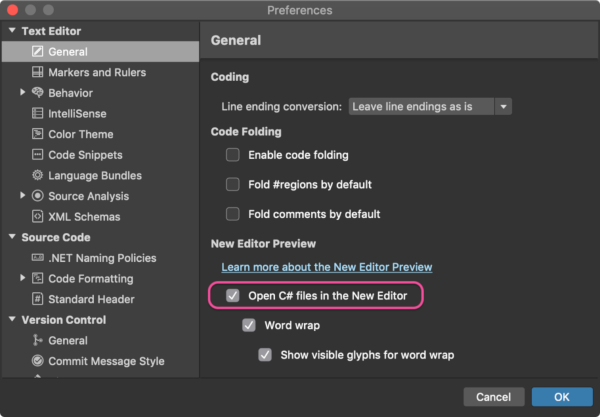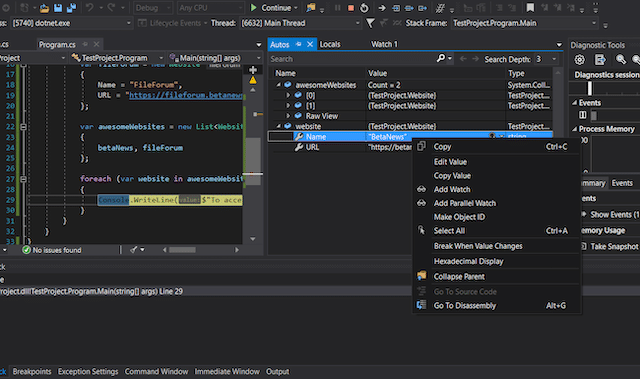In this 10-minute quickstart, you'll learn how to create and run a web performance and load test project in Visual Studio. Load tests execute web performance or unit tests to simulate many users accessing a server at the same time.
After downloading and installing VS 2019, you are now ready to launch Visual Studio 2019 and start programming in Visual Basic 2019. 1.2 Visual Studio 2019 Start Page. The VS2019 start page is quite different from VS 2017. When you first launch Visual Studio 2019, the following start Page appears, as shown in Figure 1.1. One of the most common and ever-growing applications in the web space these days are Single Page Applications (SPA) which are developed used JavaScript frameworks like Angular, React etc. For an application's front end. You will find many articles and tutorials on building Angular applications using Visual Studio Code. However, Visual Studio 2019 comes with a very neat template for.
Visual Studio Html Wysiwyg
Note
Make sure you have your Visual Studio Code application saved in a place you know you will easily be able to find it. Windows users: It will automatically be placed in your Start menu. Mac users: Click and drag the Visual Studio Code icon from the Downloads folder to the Applications folder. Linux users: It should appear in your task bar of programs. That’s it, you’ve successfully installed. HTML Tools will jump to the location inside CSS, LESS and Sass files. Peek definition. Hit Alt+F12 when the curser is located inside a class or ID attribute. A peek definition inline code window will appear showing the definition of the class/ID from CSS, LESS and Sass files. Full Intellisense provided for: Apple iOS; Twitter Cards.

Web performance and load test functionality is deprecated. Visual Studio 2019 is the last version where web performance and load testing will be available. For more information, see the Cloud-based load testing service end of life blog post.
If you have already created a Web Forms site in Visual Studio or Visual Studio Express for Web (for example, by completing Walkthrough: Creating a Basic Web Forms Page in Visual Studio), you can use that web site and go to the next section. Otherwise, create a website and Web Forms page by following these steps.
Software requirements
Web performance and load test projects are only available in the Enterprise edition of Visual Studio.
Install the load testing component
If you don't already have the web performance and load testing tools component installed, you'll need to install it through the Visual Studio Installer.
Open Visual Studio Installer from the Start menu of Windows. You can also access it in Visual Studio from the new project dialog box or by choosing Tools > Get Tools and Features from the menu bar.
In Visual Studio Installer, choose the Individual components tab, and scroll down to the Debugging and testing section. Select Web performance and load testing tools.
Choose the Modify button.
The web performance and load testing tools component is installed.
Create a load test project
In this section, we'll create a C# load test project. You can also create a Visual Basic load test project, if you prefer.
Open Visual Studio.
Choose File > New > Project from the menu bar.
The New Project dialog box opens.
In the New Project dialog box, expand Installed and Visual C#, and then select the Test category. Choose the Web Performance and Load Test Project template.
Enter a name for the project if you don't want to use the default name, and then choose OK.
Open Visual Studio.
On the start window, choose Create a new project.
On the Create a new project page, type web test into the search box, and then select the Web Performance and Load Test Project [Deprecated] template for C#. Choose Next.
Enter a name for the project if you don't want to use the default name, and then choose Create.
Visual Studio 2019 Html5 Project
Visual Studio creates the project and displays the files in Solution Explorer. The project initially contains one web test file named WebTest1.webtest.
Add a load test to the project
From the right-click menu, or context menu, of the project node in Solution Explorer, choose Add > Load Test.
The New Load Test Wizard opens.
Select the On-premises Load Test option, and then choose Next. You can learn more about cloud-based load testing here.
Choose Next to step through the wizard until you reach the Add tests to a load test scenario and edit the test mix page. Choose the Add button.
The Add Tests dialog box opens.
Under Available tests, select WebTest1, and then choose the right arrow to move it over to the Selected tests box. Choose the OK button.
Back in the New Load Test Wizard, choose the Finish button.
The load test is added to the project, and the load test file opens in the editor window.
Visual Studio 2019 Html Formatting
Run the load test
We've created a load test that doesn't do very much, but let's run it anyway.
Visual Studio 2019 Html5
From the right-click menu, or context menu, of the load test that's open in the editor, choose Run Load Test.

The load test starts running. The Test Results window shows that the test is in progress, and the load test analyzer is displayed in the editor window. After the test completes, which should be five minutes if you accepted the defaults, a summary is shown in the editor. You can choose Graphs, Tables, or Detail to get different information about the results of the load test.
Next steps
Visual Studio Code View Html
Now that you've created a simple load test project, the next step is to configure scenarios, counter sets, and run settings.
